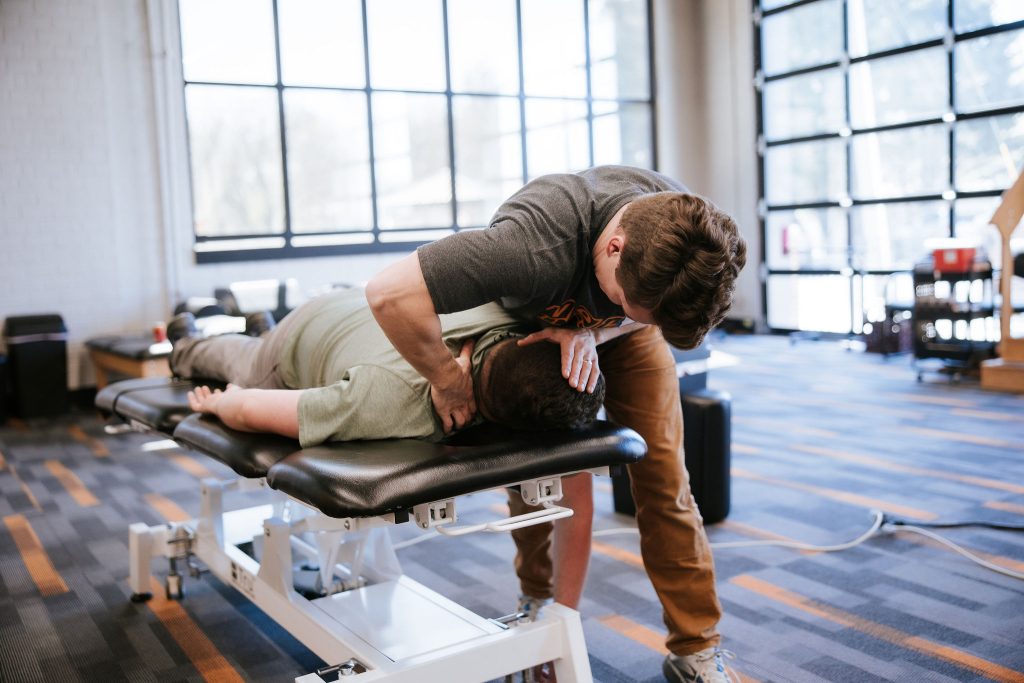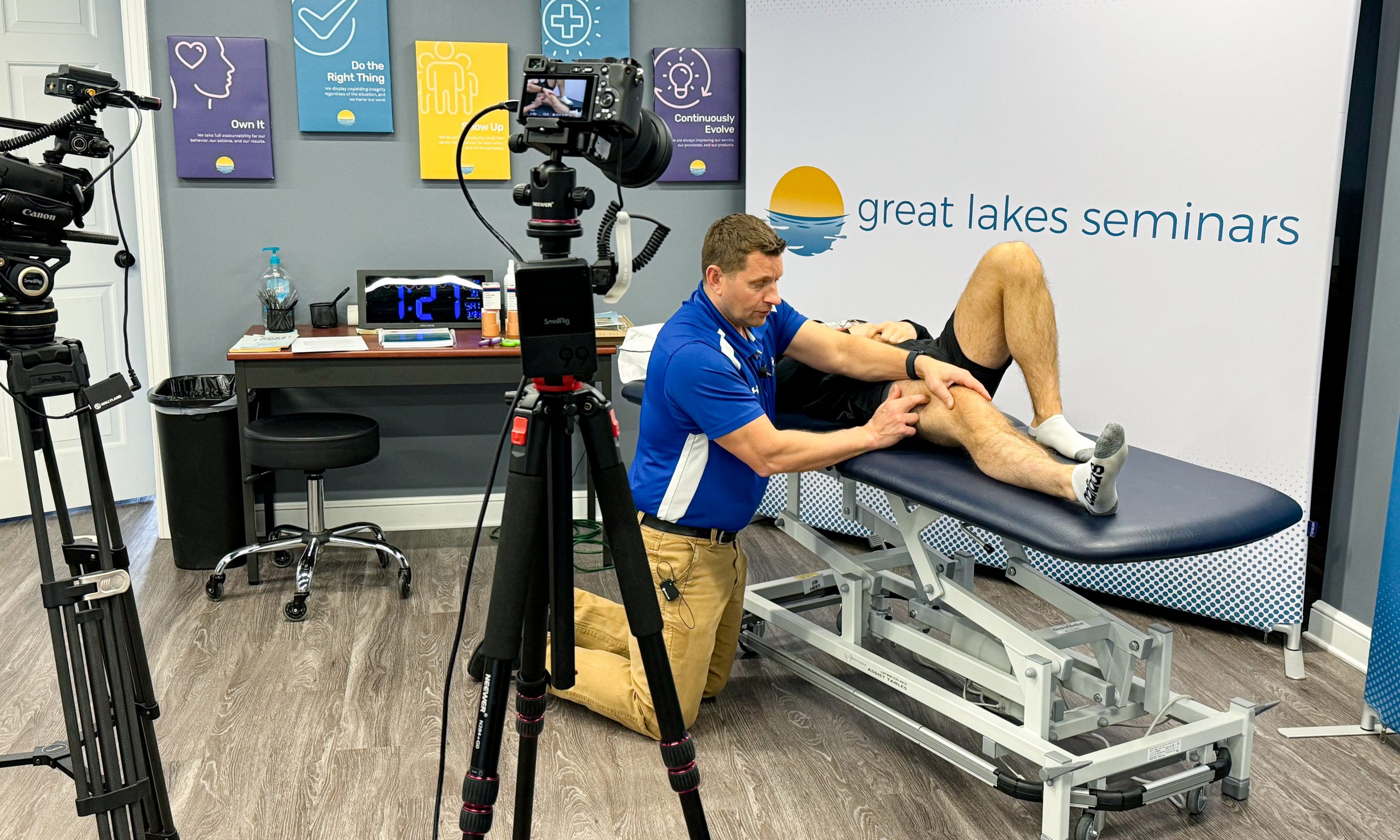Correcting and Retraining Before Progressing

If you’ve taken a course with us at GLS before, you’ve heard some common themes. The most well-known is likely test, treat, retest; but there is also joint first, then muscle, followed by fascia, and finally compensation, as well as correct, retrain, strengthen, and progress. We will focus on the latter for this post, as we can do a lot of good with very few tools if we look for the correct details.
Surrounded by Plenty of Bells and Whistles
Therapists these days are inundated by social media ads and posts of the latest and greatest exercises where we see high level athletes/patients completing these incredible activities. They often involve using the newest equipment out there that may cost hundreds or thousands of dollars. While there is a ton of good to these, and I utilize a lot of them myself, we need to remember that we can do a lot of good with our brains and our hands along with proper neuromuscular reeducation through cueing.
Often, I see young therapists, or even excited experienced therapists, skip over the correcting and retraining aspect to jump into the fun strengthening or coordination exercise. However, they miss the cueing of the patient and this patient may be compensating which is just promoting inefficient patterns. I am guilty of doing this myself. We all get excited when we can push a patient to achieve more. Let’s always remember to take a step back, and focus on what is needed in front of you.
Correct, Retrain, Strengthen, Progress
Palpating and recognizing when a muscle is inhibited through hypertonic tissue, or a joint has limited mobility should be our first step in correcting any poor patterns or inefficiencies with our patients. We can use test, treat, retest to do so. This may be the glute max not activating properly which is limiting our hip extension power and mobility leading to compensation and back pain. Or maybe it’s the medial clavicle that doesn’t want to inferiorly glide which is leading to more compensation at the shoulder complex and shoulder pain. We can complete MFR or trigger point release of these soft tissue compensations to shut the hypertonic tissue down to its resting state. Or we can complete the inferior mobilization of the medial clavicle. Let’s ensure we take a step back, check the basics of joint and myofascial mobility, and correct our patient’s mechanics first.
We can then retrain the proper ROM, muscular activation, and patterns through exercise whether it be concentrically, isometrically, or eccentrically. Depending upon the injury, there is a lot of good to be said about isometric training (especially long holds with tendinopathies), and eccentrics before we focus on concentric loading. Ensuring a patient knows how to properly activate their appropriate musculature and move through the correct pattern is key though. Be sure your patient even knows how to extend their hip through use of their glutes, and a patient can elevate their shoulder without hiking through the upper trap. Retrain the proper mechanics whether we’re stepping back to a glute set to build up, or working on lower trap activation to hold the scapula in more of a depressed position and inhibiting the upper trap. Don’t forget those early keys before moving on.
Then we can start having some fun with progression through strengthening, power, speed, and endurance activities. This is where we can have the fun that we talked about early on through pushing our patients. However, we need to make sure the groundwork is laid properly first through the correcting and retraining. Much of which we can find great benefit with manual therapy and neuromuscular reeducation.
Questions? Check out these FAQs!
This is a structured approach to patient care that helps ensure lasting results. It means starting with correction of dysfunctions (like joint restrictions or muscle imbalances), followed by retraining proper movement patterns, then moving into strengthening and progressing exercises to restore full function and performance.
If you skip the correction and retraining stages, you risk reinforcing compensations or faulty movement patterns. This can lead to continued pain, poor performance, or even reinjury. Correcting first ensures you’re building strength and endurance on a solid foundation of proper mechanics.
Start by slowing down and assessing each stage of your patient’s progress. Ask: Have I corrected the dysfunction? Have I retrained the proper movement? Once both are achieved, move forward with strengthening and advanced progressions. This approach leads to more efficient, effective, and sustainable results for your patients.
Manual therapy helps identify and correct the physical barriers that prevent normal movement—like joint stiffness or myofascial restrictions. Once these are addressed, retraining and strengthening exercises become more effective and efficient.
Share this article:


